
Keywords: gene drive mechanism
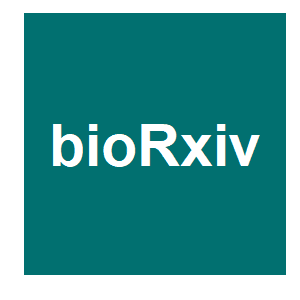
|
2-Locus Cleave and Rescue; selfish elements harness a recombination rate-dependent generational clock for self limiting gene driveG. Oberhofer, T. Ivy and B. A. Hay, bioRxiv, 2020.
Self-limiting gene drive allows control over the spread and fate of linked traits. Cleave and Rescue (ClvR) elements create self-sustaining drive and comprise a DNA sequence-modifying enzyme (Cas9-gRNAs, Cleaver) that disrupts an essential gene, and a tightly linked, uncleavable ... Keywords: gene drive evolution, gene drive genetics, gene drive mechanism, gene drive natural, meiotic drive, mice, tailless |

|
Gene drive outcomes not determined by genetic variation – A PodcastThomas Locke, Malaria Minute, 2020.
Gene drives are a system of genetic modification that use ‘molecular scissors’ to edit DNA sequences that self-perpetuate to ensure the rapid spread of mutation in a population. They offer new avenues for eradicating vector-borne diseases like malaria. They rely on the Cas9 ... Keywords: gene drive evolution, gene drive genetics, gene drive mechanism, gene drive natural, meiotic drive, mice, tailless |

|
The yeast mating-type switching endonuclease HO is a domesticated member of an unorthodox homing genetic element familyA. Y. Coughlan, L. Lombardi, S. Braun-Galleani, A. A. R. Martos, V. Galeote, F. Bigey, S. Dequin, K. P. Byrne and K. H. Wolfe, eLife, 9:e55336. 2020.
The mating-type switching endonuclease HO plays a central role in the natural life cycle of Saccharomyces cerevisiae, but its evolutionary origin is unknown. HO is a recent addition to yeast genomes, present in only a few genera close to Saccharomyces. Here we show that HO is ... Keywords: gene drive evolution, gene drive genetics, gene drive mechanism, gene drive natural, meiotic drive, mice, tailless |

|
Development and testing of a novel killer–rescue self-limiting gene drive system in Drosophila melanogasterS. H. Webster, M. R. Vella and M. J. Scott, Proceedings of the Royal Society B: Biological Sciences, 287:20192994. 2020.
Here we report the development and testing of a novel self-limiting gene drive system, Killer–Rescue (K–R), in Drosophila melanogaster. This system is composed of an autoregulated Gal4 Killer (K) and a Gal4-activated Gal80 Rescue (R). Overexpression of Gal4 is lethal, but in ... Keywords: gene drive evolution, gene drive genetics, gene drive mechanism, gene drive natural, meiotic drive, mice, tailless |

|
Natural gene drives offer potential pathogen control strategies in plantsD. M. Gardiner, A. Rusu, L. Barrett, G. C. Hunter and K. Kazan, bioRxiv, 2020.
Globally, fungal pathogens cause enormous crop losses and current control practices are not always effective, economical or environmentally sustainable. Tools enabling genetic management of wild pathogen populations could potentially solve many problems associated with plant ... Keywords: gene drive evolution, gene drive genetics, gene drive mechanism, gene drive natural, meiotic drive, mice, tailless |
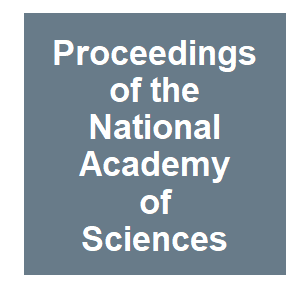
|
Gene drive and resilience through renewal with next generation Cleave and Rescue selfish genetic elementsG. Oberhofer, T. Ivy and B. A. Hay, Proceedings of the National Academy of Sciences, 117:9013-9021. 2020.
Gene drive can spread beneficial traits through populations, but will never be a one-shot project in which one genetic element provides all desired modifications, for an indefinitely long time. Here, we show that gene drive-mediated population modification in Drosophila can be ... Keywords: gene drive evolution, gene drive genetics, gene drive mechanism, gene drive natural, meiotic drive, mice, tailless |

|
Dramatically diverse Schizosaccharomyces pombe wtf meiotic drivers all display high gamete-killing efficiencyM. A. Bravo Núñez, I. M. Sabbarini, M. T. Eickbush, Y. Liang, J. J. Lange, A. M. Kent and S. E. Zanders, PLOS Genetics, 16:e1008350. 2020.
During gametogenesis, the two gene copies at a given locus, known as alleles, are each transmitted to 50% of the gametes (e.g. sperm). However, some alleles cheat so that they are found in more than the expected 50% of gametes, often at the expense of fertility. This selfish ... Keywords: gene drive evolution, gene drive genetics, gene drive mechanism, gene drive natural, meiotic drive, mice, tailless |

|
Development of a confinable gene drive system in the human disease vector Aedes aegyptiM. Li, T. Yang, N. P. Kandul, M. Bui, S. Gamez, R. Raban, J. Bennett, H. M. Sánchez C, G. C. Lanzaro, H. Schmidt, Y. Lee, J. M. Marshall and O. S. Akbari, eLife, 9:e51701. 2020.
Aedes aegypti is the principal mosquito vector for many arboviruses that increasingly infect millions of people every year. With an escalating burden of infections and the relative failure of traditional control methods, the development of innovative control measures has become ... Keywords: gene drive evolution, gene drive genetics, gene drive mechanism, gene drive natural, meiotic drive, mice, tailless |

|
The kill-switch for CRISPR that could make gene-editing saferE. Dolgin, Nature, 577:308-310. 2020.
How anti-CRISPR proteins and other molecules could bolster biosecurity and improve medical treatments. Keywords: gene drive evolution, gene drive genetics, gene drive mechanism, gene drive natural, meiotic drive, mice, tailless |
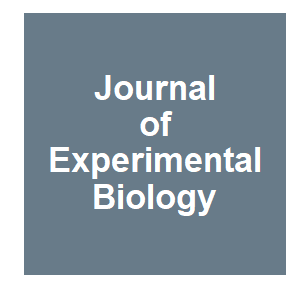
|
A selfish genetic element linked to increased lifespan impacts metabolism in female house miceLopes, P. C. and A. K. Lindholm, The Journal of Experimental Biology, 2019:212704. 2019.
Gene drive systems can lead to the evolution of traits that further enhance the transmission of the driving element. In gene drive, one allele is transmitted to offspring at a higher frequency than the homologous allele. This has a range of consequences, which generally include a ... Keywords: gene drive evolution, gene drive genetics, gene drive mechanism, gene drive natural, meiotic drive, mice, tailless |

|
Gene drive and resilience through renewal with next generation Cleave and Rescue selfish genetic elementsOberhofer, G., T. Ivy and B. A. Hay, bioRxiv, 2019:2019.2012.2013.876169. 2019.
Gene drive-based strategies for modifying populations face the problem that genes encoding cargo and the drive mechanism are subject to separation, mutational inactivation, and loss of efficacy. Resilience, an ability to respond to these eventualities in ways that restore ... Keywords: gene drive evolution, gene drive genetics, gene drive mechanism, gene drive natural, meiotic drive, mice, tailless |
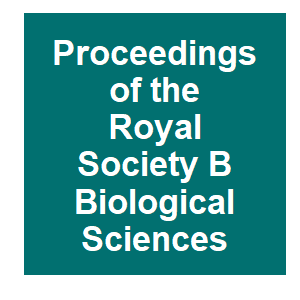
|
Rodent gene drives for conservation: opportunities and data needsJ. Godwin, M. Serr, K. Barnhill-Dilling, D. V. Blondel, P. R. Brown, K. Campbell, J. Delborne, A. L. Lloyd, K. P. Oh, T. A. A. Prowse, R. Saah and P. Thomas, Proceedings of the Royal Society B-Biological Sciences, 286:20191606. 2019.
Invasive rodents impact biodiversity, human health and food security worldwide. The biodiversity impacts are particularly significant on islands, which are the primary sites of vertebrate extinctions and where we are reaching the limits of current control technologies. Gene ... Keywords: gene drive evolution, gene drive genetics, gene drive mechanism, gene drive natural, meiotic drive, mice, tailless |

|
Combinations of Spok genes create multiple meiotic drivers in PodosporaA. A. Vogan, S. L. Ament-Velásquez, A. Granger-Farbos, J. Svedberg, E. Bastiaans, A. J. M. Debets, V. Coustou, H. Yvanne, C. Clavé, S. J. Saupe and H. Johannesson, eLife, 8:e46454. 2019.
Meiotic drive is the preferential transmission of a particular allele during sexual reproduction. The phenomenon is observed as spore killing in multiple fungi. In natural populations of Podospora anserina, seven spore killer types (Psks) have been identified through classical ... Keywords: gene drive evolution, gene drive genetics, gene drive mechanism, gene drive natural, meiotic drive, mice, tailless |

|
A family of killersM. De Carvalho and S. E. Zanders, eLife, 8:e49211. 2019.
Spok genes are meiotic drivers that increase their own chances of transmission by killing gametes that do not inherit them. Keywords: gene drive evolution, gene drive genetics, gene drive mechanism, gene drive natural, meiotic drive, mice, tailless |
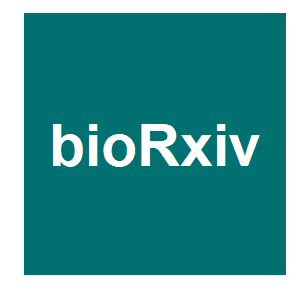
|
Assessment of a split homing based gene drive for efficient knockout of multiple genesKandul, N. P., J. Liu, A. Buchman, V. M. Gantz, E. Bier and O. S. Akbari, bioRxiv, 2019:706929. 2019.
Homing based gene drives (HGD) possess the potential to spread linked cargo genes into natural populations and are poised to revolutionize population control of animals. Given that host-encoded genes have been identified that are important for pathogen transmission, targeting ... Keywords: gene drive evolution, gene drive genetics, gene drive mechanism, gene drive natural, meiotic drive, mice, tailless |

|
A natural, conditional gene drive in plantsConner, AJJ, J.M.E., bioRxiv, 519884:1-10. 2019.
A new class of gene drive in plant populations with herbicide resistance is described; a conditional gene drive that operates following herbicide application. Screening progeny from controlled crosses of Brassica napus heterozygous for a dominant allele conferring chlorsulfuron ... Keywords: gene drive evolution, gene drive genetics, gene drive mechanism, gene drive natural, meiotic drive, mice, tailless |
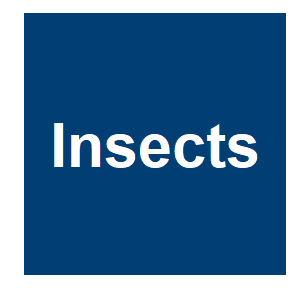
|
Genome-wide transcriptome profiling reveals genes associated with meiotic drive system of Aedes aegyptiShin, DB, K. Susanta; Severson, W. David, Insects, 10:e25. 2019.
Aedes aegypti is an important mosquito vector of several arboviruses, including dengue, yellow fever, Zika, and Chikungunya, which cause significant human morbidity and mortality globally. In certain populations of this mosquito, a native meiotic drive system causes abnormal ... Keywords: gene drive evolution, gene drive genetics, gene drive mechanism, gene drive natural, meiotic drive, mice, tailless |
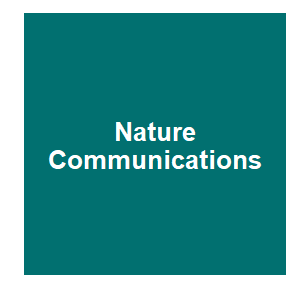
|
Efficient allelic-drive in DrosophilaGuichard, AH, T.; Bobik, M.; Xu, X. R. S.; Klanseck, C.; Kushwah, R. B. S.; Berni, M.; Kaduskar, B.; Gantz, V. M.; Bier, E., Nature Communications, 10:1640. 2019.
Gene-drive systems developed in several organisms result in super-Mendelian inheritance of transgenic insertions. Here, we generalize this "active genetic" approach to preferentially transmit allelic variants (allelic-drive) resulting from only a single or a few nucleotide ... Keywords: gene drive evolution, gene drive genetics, gene drive mechanism, gene drive natural, meiotic drive, mice, tailless |
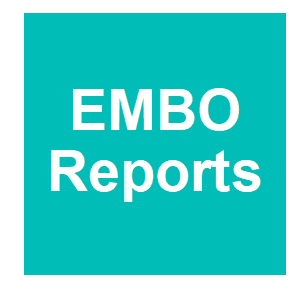
|
A genetic system for biasing the sex ratio in miceYosef, IEB, Liat; Globus, Rea; Shlomovitz, Inbar; Munitz, Ariel; Gerlic, Motti; Qimron, Udi, EMBO reports, 20:e48269. 2019.
Biasing the sex ratio of populations of different organisms, including plants, insects, crustacean, and fish, has been demonstrated by genetic and non-genetic approaches. However, biasing the sex ratio of mammalian populations has not been demonstrated genetically. Here, we ... Keywords: gene drive evolution, gene drive genetics, gene drive mechanism, gene drive natural, meiotic drive, mice, tailless |

|
Precision control of CRISPR-Cas9 using small molecules and lightGangopadhyay, SAC, K. J.; Manna, D.; Lim, D.; Maji, B.; Zhou, Q. X.; Choudhary, A., Biochemistry, 58:234-244. 2019.
The CRISPR (clustered regularly interspaced short palindromic repeat)-Cas system is an adaptive immune system of bacteria that has furnished several RNA-guided DNA endonucleases (e.g., Cas9) that are revolutionizing the field of genome engineering. Cas9 is being used to effect ... Keywords: gene drive evolution, gene drive genetics, gene drive mechanism, gene drive natural, meiotic drive, mice, tailless |

|
The toxin–antidote model of cytoplasmic incompatibility: Genetics and evolutionary implicationsBeckmann, JFB, Manon; Chen, Hongli; Hochstrasser, Mark; Poinsot, Denis; Merçot, Hervé; Weill, Mylène; Sicard, Mathieu; Charlat, Sylvain, Trends in Genetics, 35:175-185. 2019.
Wolbachia bacteria inhabit the cells of about half of all arthropod species, an unparalleled success stemming in large part from selfish invasive strategies. Cytoplasmic incompatibility (CI), whereby the symbiont makes itself essential to embryo viability, is the most common of ... Keywords: gene drive evolution, gene drive genetics, gene drive mechanism, gene drive natural, meiotic drive, mice, tailless |

|
Genetic manipulation of sex ratio in mammals: the Reaper comes for MickeySmanski, MJZ, David, EMBO reports, 20:e48577. 2019.
In most animals, sexual reproduction results in a 1:1 ratio of females to males. For several sectors of agriculture, for example, milk or egg production, only a single sex is needed. Biasing the sex ratio so that only offspring of the desired sex are produced has the potential to ... Keywords: gene drive evolution, gene drive genetics, gene drive mechanism, gene drive natural, meiotic drive, mice, tailless |
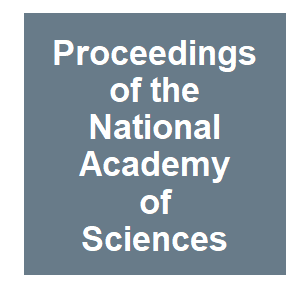
|
One prophage WO gene rescues cytoplasmic incompatibility in Drosophila melanogasterShropshire, J. D., J. On, E. M. Layton, H. Zhou and S. R. Bordenstein, Proceedings of the National Academy of Sciences, 115:4987. 2018.
The World Health Organization recommended pilot deployment of Wolbachia-infected mosquitoes to curb viral transmission to humans. Releases of mosquitoes are underway worldwide because Wolbachia can block replication of these pathogenic viruses and deterministically spread by a ... Keywords: gene drive evolution, gene drive genetics, gene drive mechanism, gene drive natural, meiotic drive, mice, tailless |

|
Evolutionary genetics of cytoplasmic incompatibility genes cifA and cifB in prophage WO of WolbachiaLindsey, A. R. I., D. W. Rice, S. R. Bordenstein, A. W. Brooks, S. R. Bordenstein and I. L. G. Newton, Genome Biology and Evolution, 10:434-451. 2018.
The bacterial endosymbiont Wolbachia manipulates arthropod reproduction to facilitate its maternal spread through host populations. The most common manipulation is cytoplasmic incompatibility (CI): Wolbachia-infected males produce modified sperm that cause embryonic mortality, ... Keywords: gene drive evolution, gene drive genetics, gene drive mechanism, gene drive natural, meiotic drive, mice, tailless |

|
Rapid comeback of males: evolution of male-killer suppression in a green lacewing populationHayashi, MN, M.; Kageyama, D., Proceedings of the Royal Society B-Biological Sciences, 285:6. 2018.
Evolutionary theory predicts that the spread of cytoplasmic sex ratio distorters leads to the evolution of host nuclear suppressors, although there are extremely few empirical observations of this phenomenon. Here, we demonstrate that a nuclear suppressor of a cytoplasmic male ... Keywords: gene drive evolution, gene drive genetics, gene drive mechanism, gene drive natural, meiotic drive, mice, tailless |
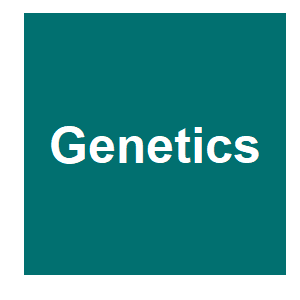
|
Origin, composition, and structure of the supernumerary B chromosome of Drosophila melanogasterHanlon, SLM, Danny E.; Eche, Salam; Hawley, R. Scott, Genetics, 210:1197. 2018.
The number of chromosomes carried by an individual species is one of its defining characteristics. Some species, however, can also carry supernumerary chromosomes referred to as B chromosomes. B chromosomes were recently identified in a laboratory stock of Drosophila ... Keywords: gene drive evolution, gene drive genetics, gene drive mechanism, gene drive natural, meiotic drive, mice, tailless |
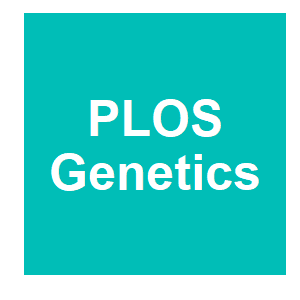
|
Selfish genetic elementsAgren, JAC, A. G., PLOS Genetics, 14:20. 2018.
Selfish genetic elements (historically also referred to as selfish genes, ultra-selfish genes, selfish DNA, parasitic DNA, genomic outlaws) are genetic segments that can enhance their own transmission at the expense of other genes in the genome, even if this has no or a negative ... Keywords: gene drive evolution, gene drive genetics, gene drive mechanism, gene drive natural, meiotic drive, mice, tailless |
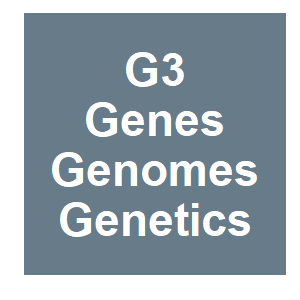
|
Tuning CRISPR-Cas9 gene grives in Saccharomyces cerevisiaeRoggenkamp, EG, Rachael M.; Schrock, Madison N.; Turnquist, Emily; Halloran, Megan; Finnigan, Gregory C., G3-Genes Genomes Genetics, 8:999. 2018.
Control of biological populations is an ongoing challenge in many fields, including agriculture, biodiversity, ecological preservation, pest control, and the spread of disease. In some cases, such as insects that harbor human pathogens (e.g., malaria), elimination or reduction of ... Keywords: gene drive evolution, gene drive genetics, gene drive mechanism, gene drive natural, meiotic drive, mice, tailless |
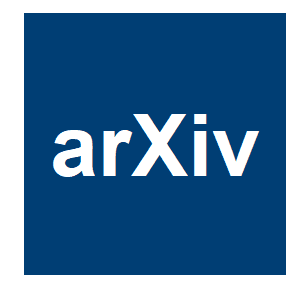
|
RPM-Drive: A robust, safe, and reversible gene drive system that remains functional after 200+ generationsReed, FAA-M, Todd G.; Costantini, Maria S.; Láruson, Áki J.; Sutton, Jolene T., arXiv, 1806.05304:1-19. 2018.
Despite the advent of several novel, synthetic gene drive mechanisms and their potential to one-day control a number of devastating diseases, among other applications, practical use of these systems remains contentious and risky. In particular, there is little in the way of ... Keywords: gene drive evolution, gene drive genetics, gene drive mechanism, gene drive natural, meiotic drive, mice, tailless |
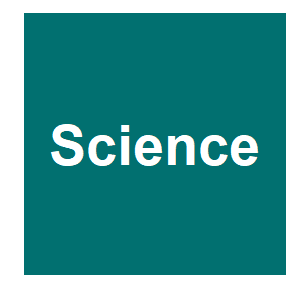
|
Spindle asymmetry drives non-Mendelian chromosome segregationT. Akera, L. Chmátal, E. Trimm, K. Yang, C. Aonbangkhen, D. M. Chenoweth, C. Janke, R. M. Schultz and M. A. Lampson, Science, 358:668. 2017.
Genetic elements compete for transmission through meiosis, when haploid gametes are created from a diploid parent. Selfish elements can enhance their transmission through a process known as meiotic drive. In female meiosis, selfish elements drive by preferentially attaching to ... Keywords: gene drive evolution, gene drive genetics, gene drive mechanism, gene drive natural, meiotic drive, mice, tailless |

|
Centromere strength provides the cell biological basis for meiotic drive and karyotype evolution in miceChmatal, L., S. I. Gabriel, G. P. Mitsainas, J. Martinez-Vargas, J. Ventura, J. B. Searle, R. M. Schultz and M. A. Lampson, Current Biology, 24:2295-2300. 2014.
Mammalian karyotypes (number and structure of chromosomes) can vary dramatically over short evolutionary time frames [1-3]. There are examples of massive karyotype conversion, from mostly telocentric (centromere terminal) to mostly metacentric (centromere internal), in 102-10 s ... Keywords: gene drive evolution, gene drive genetics, gene drive mechanism, gene drive natural, meiotic drive, mice, tailless |

|
Genetic control of invasive fish: technological options and its role in integrated pest managementThresher, REH, K.; Bax, N. J.; Teem, J.; Benfey, T. J.; Gould, F., Biological Invasions, 16:1201-1216. 2014.
Genetic options for the control of invasive fishes were recently reviewed and synthesized at a 2010 international symposium, held in Minneapolis/St. Paul, MN, USA. The only option currently available "off-the-shelf'' is triploidy, which can be used to produce sterile males for a ... Keywords: gene drive evolution, gene drive genetics, gene drive mechanism, gene drive natural, meiotic drive, mice, tailless |
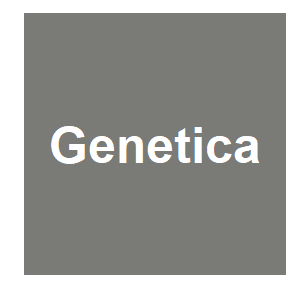
|
A selfish gene chastened: Tribolium castaneum Medea M (4) is silenced by a complementary geneThomson, MS, Genetica, 142:161-167. 2014.
Maternal-effect dominant embryonic arrest (Medea) of Tribolium castaneum are autosomal factors that act maternally to cause the death of any progeny that do not inherit them. This selfish behavior is thought to result from a maternally expressed poison and zygotically expressed ... Keywords: gene drive evolution, gene drive genetics, gene drive mechanism, gene drive natural, meiotic drive, mice, tailless |

|
Sex-biased gene expression during head development in a sexually dimorphic stalk-eyed flyWilkinson, GSJ, P. M.; Metheny, J. D.; Baker, R. H., PLOS One, 8:1-10. 2013.
Stalk-eyed flies (family Diopsidae) are a model system for studying sexual selection due to the elongated and sexually dimorphic eye-stalks found in many species. These flies are of additional interest because their X chromosome is derived largely from an autosomal arm in other ... Keywords: gene drive evolution, gene drive genetics, gene drive mechanism, gene drive natural, meiotic drive, mice, tailless |
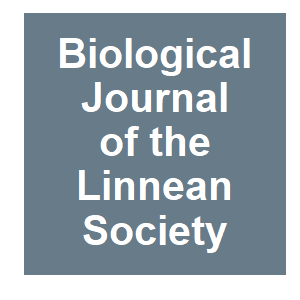
|
Changes in sperm tail development associated with Y chromosome meiotic drive leading to an excess of males in the medfly Ceratitis capitata (Diptera: Tephritidae)Rendon, PAB, R. D.; Wood, R. J., Biological Journal of the Linnean Society, 101:351-359. 2010.
The Mediterranean fruit fly Ceratitis capitata (Wied.) normally produces the sexes in equal ratio but strains carrying the Y chromosome meiotic drive MP (male-producing) factor show an excess of males. This is associated with a loss of sperm, and abnormal sperm structure in terms ... Keywords: gene drive evolution, gene drive genetics, gene drive mechanism, gene drive natural, meiotic drive, mice, tailless |
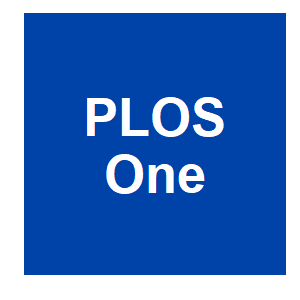
|
Multi-Locus Assortment (MLA) for transgene dispersal and elimination in mosquito populationsRasgon, JL, PLOS One, 4:e5833. 2009.
: Replacement of wild-type mosquito populations with genetically modified versions is being explored as a potential strategy to control vector-borne diseases. Due to lower expected relative fitness of transgenic individuals, transgenes must be driven into populations for these ... Keywords: gene drive evolution, gene drive genetics, gene drive mechanism, gene drive natural, meiotic drive, mice, tailless |

|
Sexually antagonistic “Zygotic Drive” of the sex ChromosomesRice, WRG, S.; Friberg, U., PLOS Genetics, 4:e1000313. 2008.
Genomic conflict is perplexing because it causes the fitness of a species to decline rather than improve. Many diverse forms of genomic conflict have been identified, but this extant tally may be incomplete. Here, we show that the unusual characteristics of the sex chromosomes ... Keywords: gene drive evolution, gene drive genetics, gene drive mechanism, gene drive natural, meiotic drive, mice, tailless |

|
Small steps or giant leaps for male-killers? Phylogenetic constraints to male-killer host shiftsTinsley, MCM, M. E. N., BMC Evolutionary Biology, 7:e1000313. 2007.
Background: Arthropods are infected by a wide diversity of maternally transmitted microbes. Some of these manipulate host reproduction to facilitate population invasion and persistence. Such parasites transmit vertically on an ecological timescale, but rare horizontal ... Keywords: gene drive evolution, gene drive genetics, gene drive mechanism, gene drive natural, meiotic drive, mice, tailless |

|
A sex-ratio meiotic drive system in Drosophila simulans. I: An autosomal suppressorTao, YM, J. P.; Araripe, L.; Ke, Y.; Hartl, D. L., PLOS Biology, 5:2560-2575. 2007.
Sex ratio distortion (sex-ratio for short) has been reported in numerous species such as Drosophila, where distortion can readily be detected in experimental crosses, but the molecular mechanisms remain elusive. Here we characterize an autosomal sex-ratio suppressor from D. ... Keywords: gene drive evolution, gene drive genetics, gene drive mechanism, gene drive natural, meiotic drive, mice, tailless |
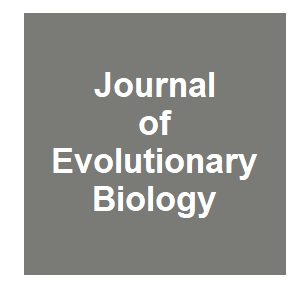
|
Fitness effects of X chromosome drive in the stalk-eyed fly, Cyrtodiopsis dalmanniWilkinson, GSJ, P. M.; Kelleher, E. S.; Muscedere, M. L.; Lorsong, A., Journal of Evolutionary Biology, 19:1851-1860. 2006.
Sex-ratio (SR) males produce predominantly female progeny because most Y chromosome sperm are rendered nonfunctional. The resulting transmission advantage of X-SR chromosomes should eventually cause population extinction unless segregation distortion is masked by suppressors or ... Keywords: gene drive evolution, gene drive genetics, gene drive mechanism, gene drive natural, meiotic drive, mice, tailless |
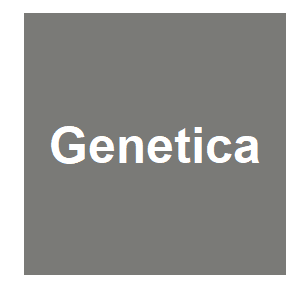
|
Common features of segregation distortion in plants and animalsTaylor, DRI, P. K., Genetica, 117:27-35. 2003.
Segregation distortion is increasingly recognized as a potentially powerful evolutionary force. This runs counter to the perception that non-Mendelian genes are rare genetic curiosities, a view that seems to be supported by the near ubiquity of the Mendelian system of ... Keywords: gene drive evolution, gene drive genetics, gene drive mechanism, gene drive natural, meiotic drive, mice, tailless |
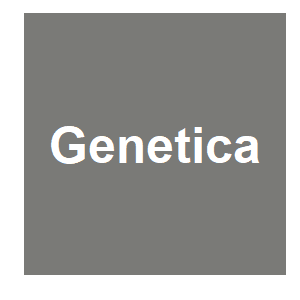
|
Chromosomally-induced meiotic drive in Drosophila males: Checkpoint or fallout?Tomkiel, JE, Genetica, 109:95-103. 2000.
In male Drosophila melanogaster, anomalies in sex chromosome pairing at meiosis often lead to complete or partial sperm dysfunction. This observation has led to the suggestion that defects in either the efficiency or configuration of chromosome pairing at metaphase trigger a ... Keywords: gene drive evolution, gene drive genetics, gene drive mechanism, gene drive natural, meiotic drive, mice, tailless |

|
Male eye span in stalk-eyed flies indicates genetic quality by meiotic drive suppressionWilkinson, GSP, D. C.; Crymes, L., Nature, 391:276-279. 1998.
In some species, females choose mates possessing ornaments that predict offspring survival(1-5). However, sexual selection by female preference for male genetic quality(6-8) remains controversial because conventional genetic mechanisms maintain insufficient variation in male ... Keywords: gene drive evolution, gene drive genetics, gene drive mechanism, gene drive natural, meiotic drive, mice, tailless |
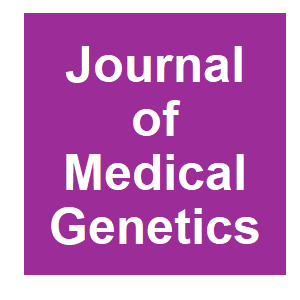
|
Non-Mendelian transmission at the Machado-Joseph disease locus in normal females: Preferential transmission of alleles with smaller CAG repeatsRubinsztein, DCL, J., Journal of Medical Genetics, 34:234-236. 1997.
Machado-Joseph disease (MJD), also known as spinocerebellar ataxia type 3, is a neurodegenerative disorder which is associated with a CAG repeat expansion in the MJD1 gene on chromosome 14q32.1. A recent study reported an excess of transmission of disease chromosomes relative to ... Keywords: gene drive evolution, gene drive genetics, gene drive mechanism, gene drive natural, meiotic drive, mice, tailless |
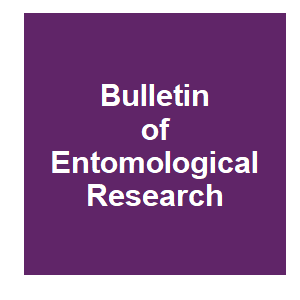
|
Variation in Y chromosome meiotic drive in Aedes aegypti (Diptera: Culicidae): a potential genetic approach to mosquito controlOwusuDaaku, KOW, R. J.; Butler, R. D., Bulletin of Entomological Research, 87:617-623. 1997.
Reciprocal crosses between strains of Aedes aegypti (Linnaeus) from different geographical areas have revealed an unexpectedly complex pattern of holandrically inherited male biased sex ratios in F2. The variation has been interpreted in terms of a web of X-Y interactions in F1, ... Keywords: gene drive evolution, gene drive genetics, gene drive mechanism, gene drive natural, meiotic drive, mice, tailless |
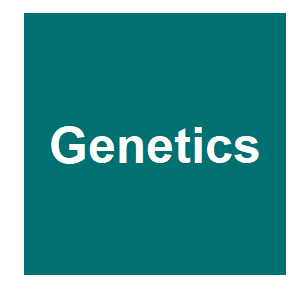
|
Measuring meiotic driveRobbins, LGP, G.; Bonaccorsi, S.; Pimpinelli, S., Genetics, 142:645-647. 1996.
LAURENCE HURST’S (1996) letter re-examines our data on the effect of Stellate copy number on the meiotic parameters of Mystal- (= su(ste)-) males (PALUMBO et al. 1994). In our analysis, we found a tight correlation of fertility and disjunction with Stellate copy number, with ... Keywords: gene drive evolution, gene drive genetics, gene drive mechanism, gene drive natural, meiotic drive, mice, tailless |

|
On the components of Segregation Distortion in Drosophila melanogaster 5: Molecular analysis of the SD locusPowers, PAG, B., Genetics, 129:133-144. 1991.
Segregation Distorter (SD) is a naturally occurring meiotic drive system comprising at least three distinct loci: Sd, Rsp and E(SD). Heterozygous SD/SD+ males transmit the SD chromosome in vast excess over the normal homolog. The distorted transmission involves the induced ... Keywords: gene drive evolution, gene drive genetics, gene drive mechanism, gene drive natural, meiotic drive, mice, tailless |

|
Abnormal salivary gland puff associated with meiotic drive in mosquitos (Diptera, Culicidae)Sweeny, TLG, P.; Barr, A. R., Journal of Medical Entomology, 24:623-627. 1987.
A meiotic drive factor, distorter (d), has been described previously for Culex pipiens L. mosquitoes. Males homozygous for the gene (Md/md) produce few female offspring owing to breakage of the female-determining dyad of chromosome 1 (the sex chromosome) during the first meiotic ... Keywords: gene drive evolution, gene drive genetics, gene drive mechanism, gene drive natural, meiotic drive, mice, tailless |
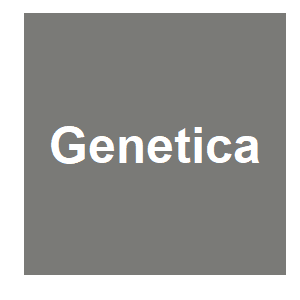
|
Between family variation in sex-ratio in Trinidad (T-30) strain of Aedes-aegypti (L) indicating differences in sensitivity to meiotic drive gene MDWood, RJ, Genetica, 46:345-361. 1976.
Sex ratio in the Trinidad (T-30) strain of Aedes aegypti has remained constant at around 43%? during seventeen years of laboratory culture. The divergence from 50% is due to meiotic drive by the MD gene on the Y chromosome. The driving Y chromosome gives a much more distorted sex ... Keywords: gene drive evolution, gene drive genetics, gene drive mechanism, gene drive natural, meiotic drive, mice, tailless |
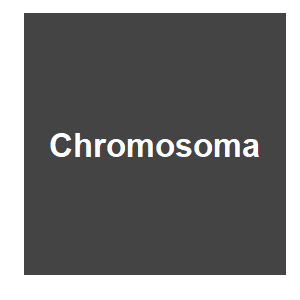
|
Meiotic drive for B-chromosomes in primary oocytes of Myrmeleotettix maculatus (Orthoptera-Acrididae)Hewitt, GM, Chromosoma, 56:381-391. 1976.
Using a modified technique which allowed observation of chromosome orientation in the primary oocyte of grasshoppers at the onset of anaphase, it has been possible to establish that the B-chromosome is distributed preferentially on the egg side of the metaphase plate rather than ... Keywords: gene drive evolution, gene drive genetics, gene drive mechanism, gene drive natural, meiotic drive, mice, tailless |

Contact
David O’Brochta
Foundation for the
National Institutes of Health
geneconvenevi@fnih.org
RSS

